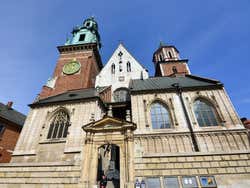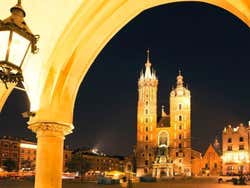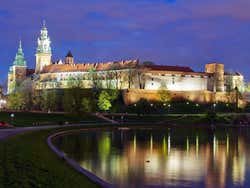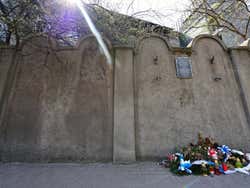
History of Kraków
Delve into the fascinating history of Kraków, one of Poland’s oldest cities, which was established during the fourth century, and learn how it has evolved.
Origins of Kraków
Archaeological records show that the site where Kraków is currently located, near Wawel Hill and Vistula River, was inhabited since the Stone Age.
During the sixth century, the West Slavic tribe called Vistulans or Vistulanians settled on Wawel Hill.
Three centuries later, in the ninth century, while Saint Methodius was converting the Slav population of the area, it is believed that the tribe of the Vistulans had a legendary ruler Krakus who is responsible for the foundation of Kraków.
The first documented appearance of the city’s name dates from 966, when a Sephardi visitor described it as an important commercial center.
It is also believed that the Vistulans are the first Slav people in the area to form a state and that Poland as a country could also have been shaped by the Vistulans. What is for sure is that Kraków was part of Poland in the tenth century and was capital of a voivodeship, an area administered by a Governor.
During the eleventh century, the focal point of Christianity in Poland was Kraków and a bishop was appointed to the city.
Kraków as capital of Poland
In 1038, Casimir I the Restorer moved the capital of Poland to Kraków. The Wawel Cathedral was first constructed in the eleventh century.
Krakow became capital of Poland in 1038 and remained the political front of the country until 1596.
In 1596, Sigismund III Vasa, King of Poland and Grand Duke of Lithuania from 1587 to 1632, transferred the capital to Warsaw.
During the thirteenth century, the city was destroyed by various Mongol invasions, the first in 1241 and then eighteen years later, in 1259. Kraków was rebuilt practically the same as it had been.
Kraków was deeply influenced by the Germans during this period, and in 1257, the king gave the city internal autonomy based on the Magdeburg rights.
A few decades later, in 1291, the Polish population elected Wenceslaus II as king of the country. He had been monarch of Bohemia since 1278 and was proclaimed king of Poland in 1300. Since then, Kraków depended on a Czech dynasty.
Between 1311 and 1312, the inhabitants of Kraków rebelled against the duke Władysław I, but were defeated and consequently lost the city of Gdańsk. In 1320 Władysław the Short was crowned King of Poland.
From 1333 until 1370, the country was governed by Casimir III the Great. He is known as the great reformer of Poland, transforming it from a depleted kingdom to a prosperous and rich one. During this period, Kraków became an important commercial, political, cultural and scientific hub. In 1364, the king established the Kraków Academy, the second university in that part of the world after the University of Prague.
The Lithuanian-Polish Jagiellon dynasty ruled the kingdom from 1368 to 1572. It is considered to be the most influential dynasty. The union of Polish Queen Hedwig, daughter of Louis the Great, and Jogaila, Lithuania’s Grand Duke, formed the Polish-Lithuanian Commonwealth.
The dualistic state was one of the greatest European powers of the sixteenth and seventeenth century that spread from the Baltic Sea to the Caucasus. During this period, Kraków was made the political center.
In 1440 Władysław III was crowned King of Hungary and Croatia in Kraków. Poland became a Catholic state surrounded by countries dominated by Ottoman Turkey, Orthodox powers and Germanists.
Kraków was continuously attacked by the Germanic power. These battles weakened Poland and, although the Polish could stop the Germans, another enemy arouse: Imperial Russia.
In 1596 Sigismund III Vasa moved the capital to Warsaw, in the center of the country, for the following two reasons: firstly, Poznan had gradually become Poland’s economic power, and secondly, the region of Pomerania grew until it reached the Baltic Sea.
Even after Kraków was no longer capital, it remained an extremely prominent city, as is demonstrated by the fact that the Polish kings were crowned in Wawel Cathedral.
Economic and social decline
From 1648 to 1720, the Commonwealth was the setting of numerous riots for the distribution of land and power. Bohdan Khmelnytsky, a Ukrainian Hetman (Head of State) rose against the Lithuanian-Polish Commonwealth and the Vasa dynasty. He then created a state governed by the Cossacks of Ukraine.
When the Vasa dynasty fell, a Russian army landed in Poland and the Cossacks accepted the supremacy of the Tsar. Then, the Swedish invaded the Commonwealth and pillaged Kraków and other cities, treating the citizens with violence and intolerance.
After the numerous internal uprisings and the Russian and Swedish invasions, Poland was extremely weakened and reduced to ruins. Russia annexed Ukraine, which had been Polish until then.
After Ukraine was conquered, there was a Polish national movement which led to the coronation of John III Sobieski in 1674. He is renowned for defeating the Turks at the Battle of Vienna in 1638. The Commonwealth stabilization did not last long and the kingdom was partitioned during the eighteenth century.
Kraków suffered gravely during this era. Poverty-stricken and deserted, the former capital was the site of numerous conflicts between Sweden, France, Prussia, Austria and Russia.
In 1772 Poland was divided between Russia, Austria and Prussia. The Second Partition of Poland took place in 1793, arranged by Russia and Prussia. Kraków was under Russian control until 1794.
The Polish-Lithuanian Commonwealth was disintegrated with the Third Partition of Poland by the Russians, Prussians and Austrians in 1795. Poland was completely divided for over one hundred years.
Kraków was under Austrian command in 1796.
In 1807 Napoleon Bonaparte crushed Prussia and founded the Duchy of Warsaw, incorporating Kraków in 1809.
The arrival of Napoleon in Poland gave hope to the Polish citizens of finally achieving their independence once more.
After Napoleon was overcome, the European states met to try and find a solution for the peace of Europe at the Congress of Vienna between 1814 and 1815. Poland was once again divided up between Austria, Prussia and Russia. Kraków was the only city that was given limited independence. It was called the Free City of Kraków.
The Free City of Kraków became the symbol of Polish independence, a pilgrimage site, which became an intellectual, cultural and religious center in Poland.
In 1846, the Polish organized the Kraków Uprising, but it was quickly crushed by the Austrian Empire, that then created the Grand Duchy of Cracow. In 1850, a large portion of the city was destroyed by a fire.
Kraków during the Republic of Poland
During World War I, Kraków was the political centre of Poland. The provisional government established a Provisional Council of State in the city. The Germans made the city their headquarters and created a pro-German Polish state.
After World War I, during the negotiations at the Paris Peace Conference in 1919, Poland finally regained its independence.
During World War II, Nazi Germany created the Kraków Ghetto. Nearly 80,000 Polish Jews had lived in Kraków since the thirteenth century.
Kraków was freed by the Soviet troops at the end of World War II and would remain under Soviet control until the Soviet Union collapsed.
Karol Wojtyla, Archbishop of Kraków, was made Pope in 1978 and would remain head of the Roman Catholic Church until 2005.
Nowadays, the former capital of Poland is a pilgrimage site for the Polish citizens.
Kraków is a modern metropolis and the second largest city in Poland. It is also one of the most-visited cities in Europe. Miraculously, it wasn’t gravely damaged during the two World Wars and was declared a World Heritage Site in 1978 by UNESCO.



